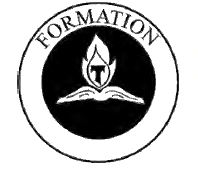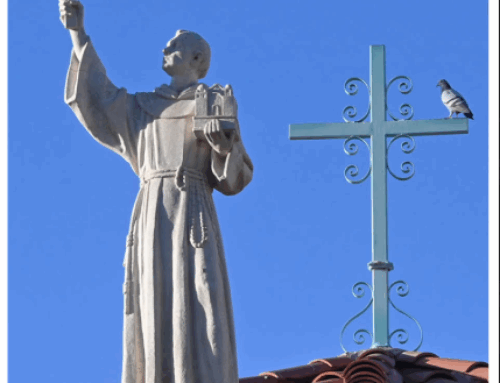(This article originally appeared in the Summer/Fall issue of the TAU-USA)
By Anne Mulqueen, OFS 
Let me introduce myself. My name is Anne Mulqueen, and I am spiritual assistant to the National Formation Commission. I have been professed for 35 years and have held many positions in the Order. My first elected position 34.5 years ago was as local formation director for Mary Our Queen fraternity in Baltimore, Md. Every position I have held since that election has been enriched by my formation background. I consider that initial election a graced moment. God led me to serve in ways I never imagined I could.
Our National Formation Chair, Diane Menditto, OFS, asked the members of the Commission to take turns writing formation articles for TAU-USA, so eventually you will hear from all of us. The topics we choose will give you some insight into each writer. Pray that we have something worthwhile to say. And as Pope Francis said, “The Spirit himself is ‘God’s gift’ par excellence …,” so I am trusting the Holy Spirit to inspire me to write something of value.
Christ Incarnate, the Second Person of the Blessed Trinity is the topic I chose.
The Centrality of Christ in the Life of Secular Franciscans
I believe most members of the Secular Franciscan Order could recite, at least in part, the first paragraph of Article 4.
The rule and life of the Secular Franciscans is this: to observe the gospel of our Lord Jesus Christ by following the example of Saint Francis of Assisi, who made Christ the inspiration and the center of his life with God and people.
Clearly stated in Article 4 is the expectation that we consciously intend to make Christ the inspiration and center of our life with God and people. To accomplish this, we must have an intimate relationship with Christ, and we must know what He said and did. Through a careful reading of the gospel, we will be able to go “… from gospel to life and life to the gospel.”
As Scripture tells us, Christ reveals the nature of the Father when he tells his disciples, “If you had known Me, you would have known My Father also….” (John 14:7). This statement comes immediately after Jesus tells them that He is the way and the truth and the life. These words of Jesus show us the way to the Father and give us a blueprint to follow. These words reveal Jesus’ identity. “The Son is the image of the invisible God, the firstborn of all creation.” (Colossians 1:15). In essence, all we know of God, is revealed through Christ.
We know from our formation that after St. Francis’ conversion experiences, he focused his life and actions on the human person of Jesus. But the transformed saint was once, as a young adult, desiring glory through war. Gradually, through a vision on his way to a crusade, his experience with a leper, and a commission from the crucified Christ to rebuild God’s house, St. Francis was transformed into another Christ.
Primacy of Christ in the Life of a Secular Franciscan
What was the reason for the Incarnation? Let’s listen to the gospel of John.
In the beginning was the Word, and the Word was with God, and the Word was God. He was with God in the beginning. Through Him all things were made, and without Him nothing was made that has been made. In Him was life, and that life was the light of men. The Light shines in the darkness and the darkness has not overcome it. John 1:1-5)
Now we know that the epistle to the Colossians calls Jesus the image of the invisible God. And the gospel of John tells us that without Him nothing was made; therefore, it follows naturally that God, who is absolutely free, wants to be known by his creation—us!
John Duns Scotus’ doctrine of the Primacy of Christ centers on Scotus’ premise that since God possesses divine freedom, God freely expressed divine love for all creation through the Incarnation. The Incarnate Christ reveals God’s divine nature as one of love and goodness.
Many of us are familiar with the Franciscan Question: “Would Christ have come if Adam did not sin?” This question is not meant to deny the nature of sin and the redemptive work of Christ. Instead, it speaks of God’s intention from all eternity to unite all that God created, animate and inanimate, into the life and love of the Trinity. From all eternity the Almighty desires to express God’s divine nature as overflowing love. Quoting Bill Short, OFM, “God doesn’t build a Taj Mahal to cover a pothole.” Our sin is a pothole in comparison to the gift of the Incarnation.
Jesus the Anointed One of God – Humanity’s Blueprint and Model
All of us are created according to the humanity of Christ. And although we are created in His image, we still need to grow into his likeness. This is the work of conversion.
One of my favorite Scriptures is from Colossians 1:27, “…Christ in you, the hope of glory.” This Scripture reminds me of the Prologue to our Rule, in which St. Francis promises me that if I make a place for Christ in my heart and persevere in doing the will of the Father, “the spirit of the Lord will rest upon [me]” and I will be a child “… of the heavenly Father…” and a “spouse, brother, and mother of our Lord Jesus Christ.” All this will be mine and it can be yours if Christ lives in us through “…a holy life [that] give light to others by example.”
Using a Franciscan lens, Christ, the center of the Blessed Trinity, is the one who reveals to us a loving and fruitful relationship between all of creation and the Trinity—God the Father, the Son and the Holy Spirit.
My prayer for you is that Christ, the hope of glory, will dwell in your heart now and forever more.
Questions for Reflection:
✤ Who is Christ for you personally, and how do you identify with Him?
✤ Do you hear a call to become “Another Christ?” How would that change your life?


Leave A Comment